Ideas for Toddler Birthday Party Activities
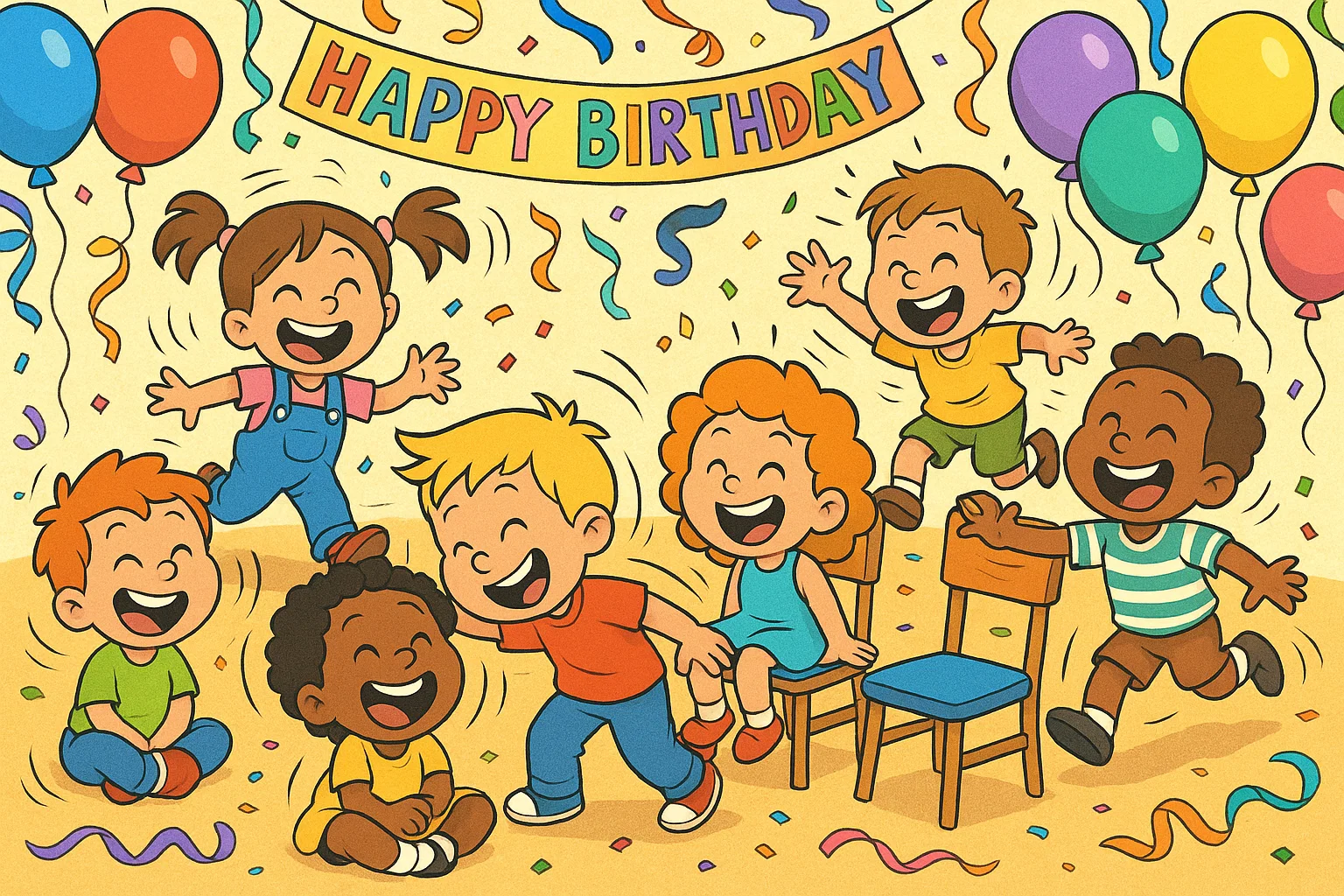
Planning a memorable birthday party for your little one doesn’t have to be overwhelming. When you choose a theme and create your invite list, remember that the best birthday party ideas for toddlers focus on simple, engaging activities that kids love. Whether you’re hosting a birthday party at home or planning an outdoor celebration, successful toddler party games keep children entertained while being safe and manageable for parents.
Research shows that toddlers typically have attention spans of 2-3 minutes per year of age, making variety and quick transitions essential for a great birthday party. The key to planning a birthday party that works is understanding that unlike an 8th birthday party with complex games, toddler celebrations thrive on familiar activities and gentle competition.
Traditional Toddler Games
Classic party games have entertained generations because they tap into children’s natural instincts for play and movement. These timeless fun games can be easily adapted for toddlers’ developmental needs while maintaining their appeal.
Musical Chairs: How to make it safe and fun with slower music and soft chairs
Transform this classic into one of the best kids activities by using soft cushions instead of hard chairs. Create a party without elimination stress by providing enough seats for everyone, or let the kids sit on colorful mats when music stops. This super fun variation keeps all children involved while maintaining excitement. Play slower, familiar music that toddlers can easily follow, making it perfect for a birthday party for a toddler celebration.
Freeze Dance: Great for toddlers’ short energy bursts, encourage movement and laughter
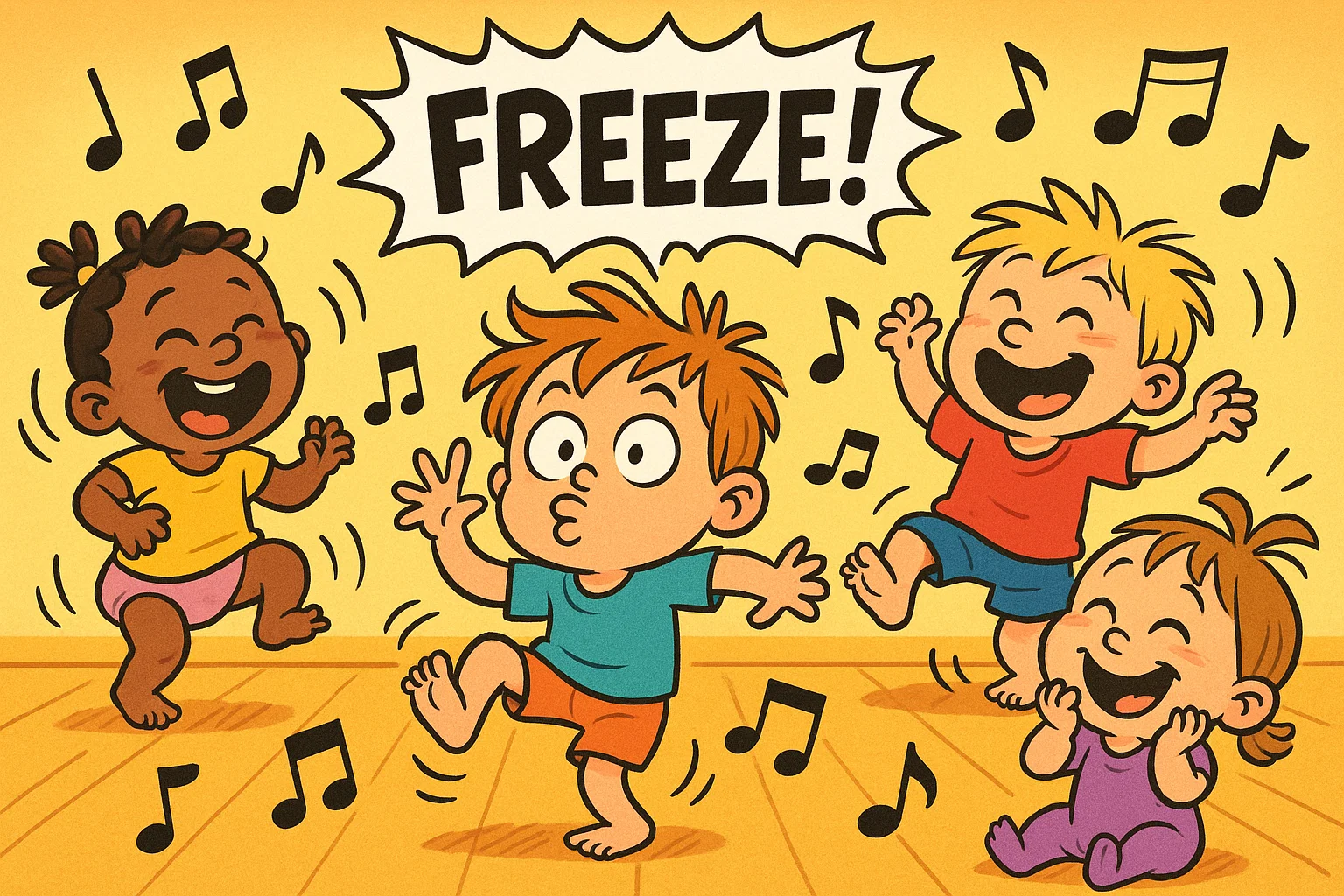
Perfect for a birthday party at home, freeze dance gets the kids moving and laughing. Create a playlist with familiar action songs and encourage wild dancing when music plays. When it stops, everyone freezes like statues. Parents can dance alongside their children, modeling fun movements and making this one of the most engaging toddler party games. Add props like scarves or ribbons to enhance the visual appeal.
Duck Duck Goose: How to simplify rules for 2–3 year olds
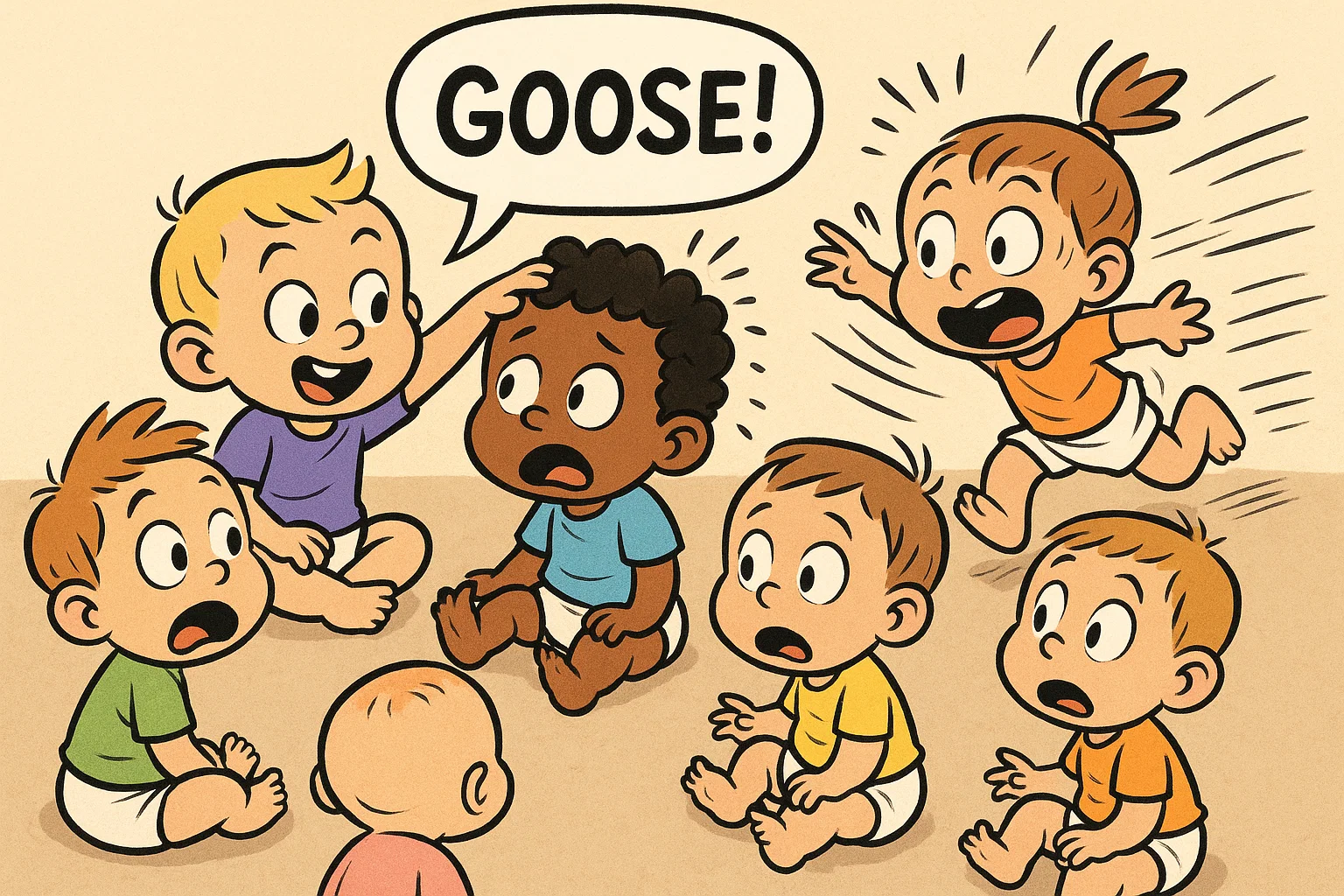
Traditional Duck Duck Goose needs simplification for toddlers. Have children sit in a circle while one child walks around tapping heads gently, saying “duck” for each tap. When they say “goose,” both children can simply walk around the circle together—no competitive chasing required. This toddler-friendly adaptation ensures easy fun without overwhelming participants. For very young children, try “Animal Sounds” where the walking child makes different animal sounds instead.
Pin the Tail Variations: Use stickers, Velcro, or magnets for safer play
Eliminate sharp pins by creating large, colorful posters with stickers, Velcro pieces, or magnetic components that toddlers can stick on safely. Popular party ideas include “Stick the Star on the Castle,” “Put the Wheels on the Car,” or “Place the Crown on the Princess.” These variations maintain the fun while being completely safe for little hands, making them ideal when planning a birthday party at home.
Hot Potato: Use a soft plush toy, keep rounds short
Replace traditional balls with soft, cuddly stuffed animals for this classic game. Toddlers sit in a circle passing the “hot potato” while music plays. When music stops, whoever holds the toy makes the animal’s sound or gives it a hug. Keep rounds very short (10-15 seconds) to match toddlers’ attention spans. This creates simple fun that’s perfect for a child’s birthday celebration.
Simon Says: Focus on silly, easy actions to keep toddlers engaged
Simon Says works brilliantly when you focus on simple, silly actions toddlers can understand: “Simon says touch your nose,” “Simon says hop like a bunny,” or “Simon says make a funny face.” Avoid elimination rules—instead, celebrate every child who follows the action. This keeps everyone involved and builds confidence, making it ideal for children’s party entertainment.
Sleeping Lions: Perfect cool-down game after active play
After high-energy activities, this quiet game helps toddlers transition to calmer moments. Children lie on the floor pretending to be sleeping lions while adults try to make them “wake up” by telling gentle jokes or making funny faces. This naturally brings energy levels down and serves as a bridge between active play and party food time.
Outdoor Party Activities
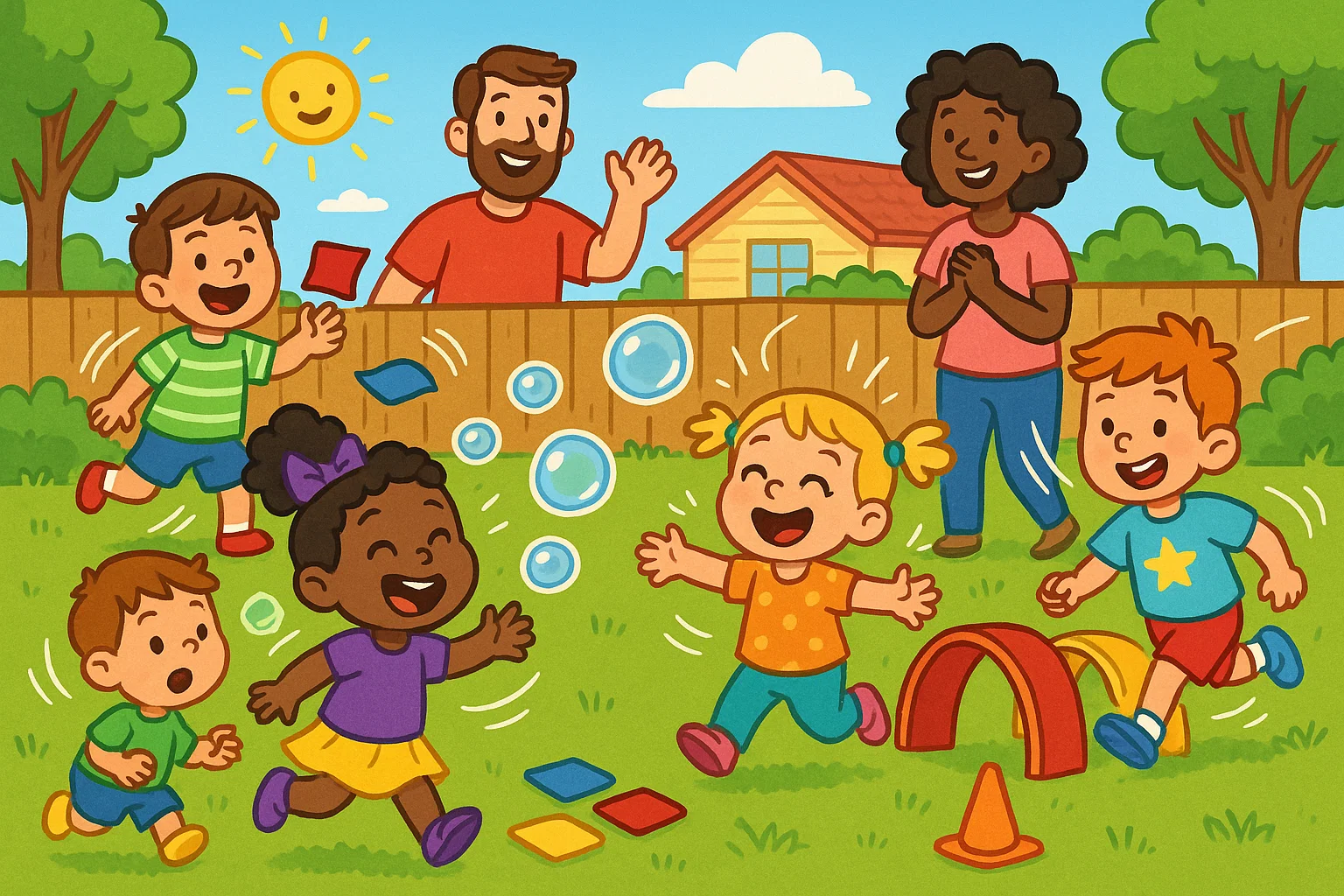
Outdoor parties offer endless possibilities with fresh air and space to run. These activities work perfectly when you want to get the kids active and engaged with nature.
Bubble Games: Bubble machines, DIY bubble solution, chasing bubbles
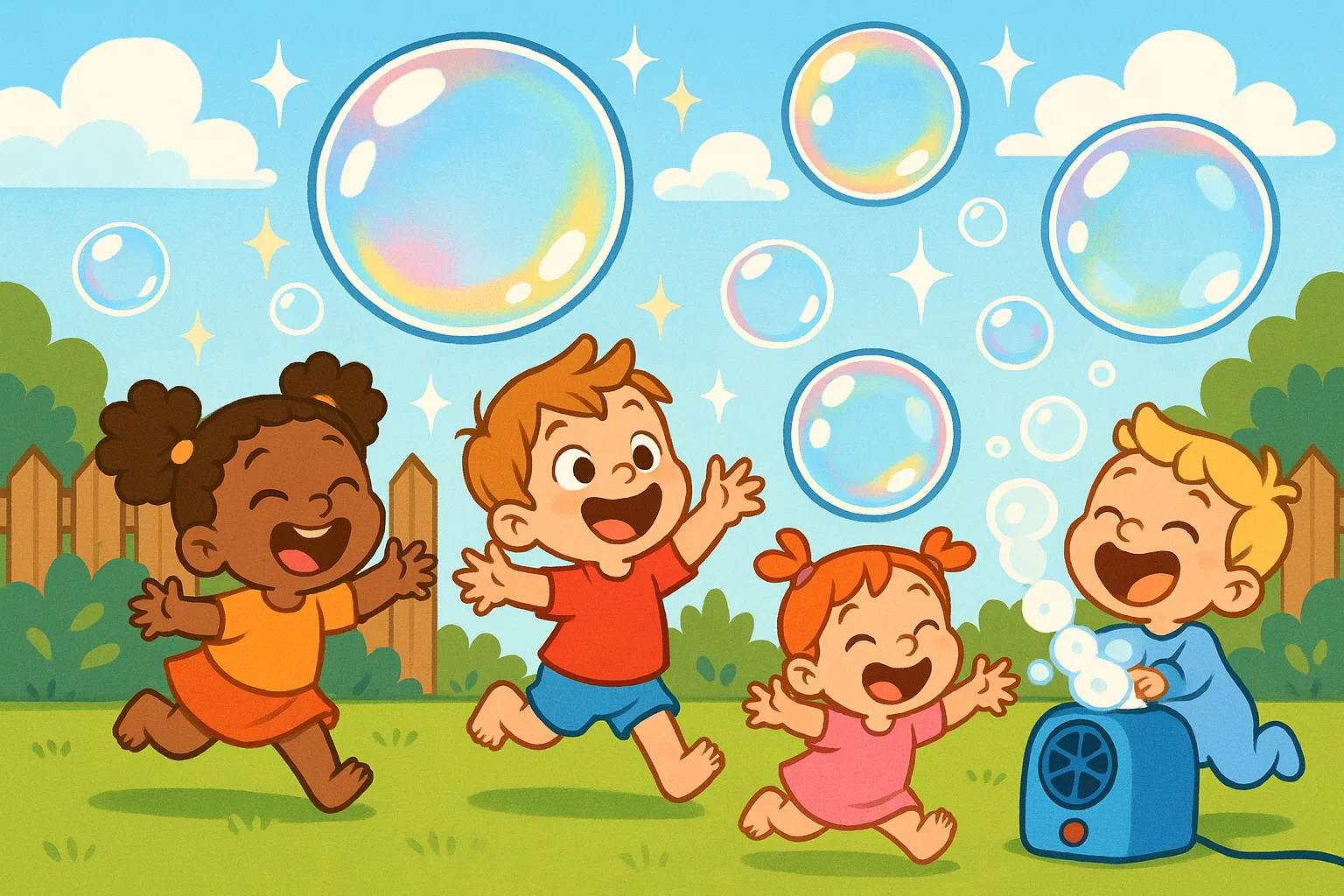
Bubbles create magical moments and rank among the most beloved birthday party ideas. Set up bubble machines for continuous entertainment while providing bubble wands of different sizes for interactive play. Create a DIY bubble solution mixing 1 cup dish soap, 6 cups water, and 1/4 cup corn syrup for longer-lasting bubbles. Let the kids chase and pop bubbles at their own pace—this activity works for all ages and creates super fun memories.
Water Balloon Toss: Adapted for toddlers with very soft balloons
Avoid regular water balloons for very young children, as broken pieces can be a choking hazard. Instead, prefer sponge balls or simple pouring water play for the youngest toddlers. Older toddlers can use very soft, small balloons filled with minimal water under close supervision. Set up gentle tossing games between partners or create targets using buckets. This provides excellent sensory stimulation while keeping play safe and fun.
Parachute Games: Simple “popcorn” ball game or lifting parachute high
A play parachute creates instant magic for toddlers. The simple act of holding edges and lifting the parachute up and down creates joy and wonder. Add lightweight balls to the center for a “popcorn” effect as they bounce around. Other activities include having children take turns running underneath when lifted high, or creating a “mushroom” by pulling down quickly while sitting on edges.
Obstacle Course: Tunnels, cones, soft mats—easy setup for toddlers
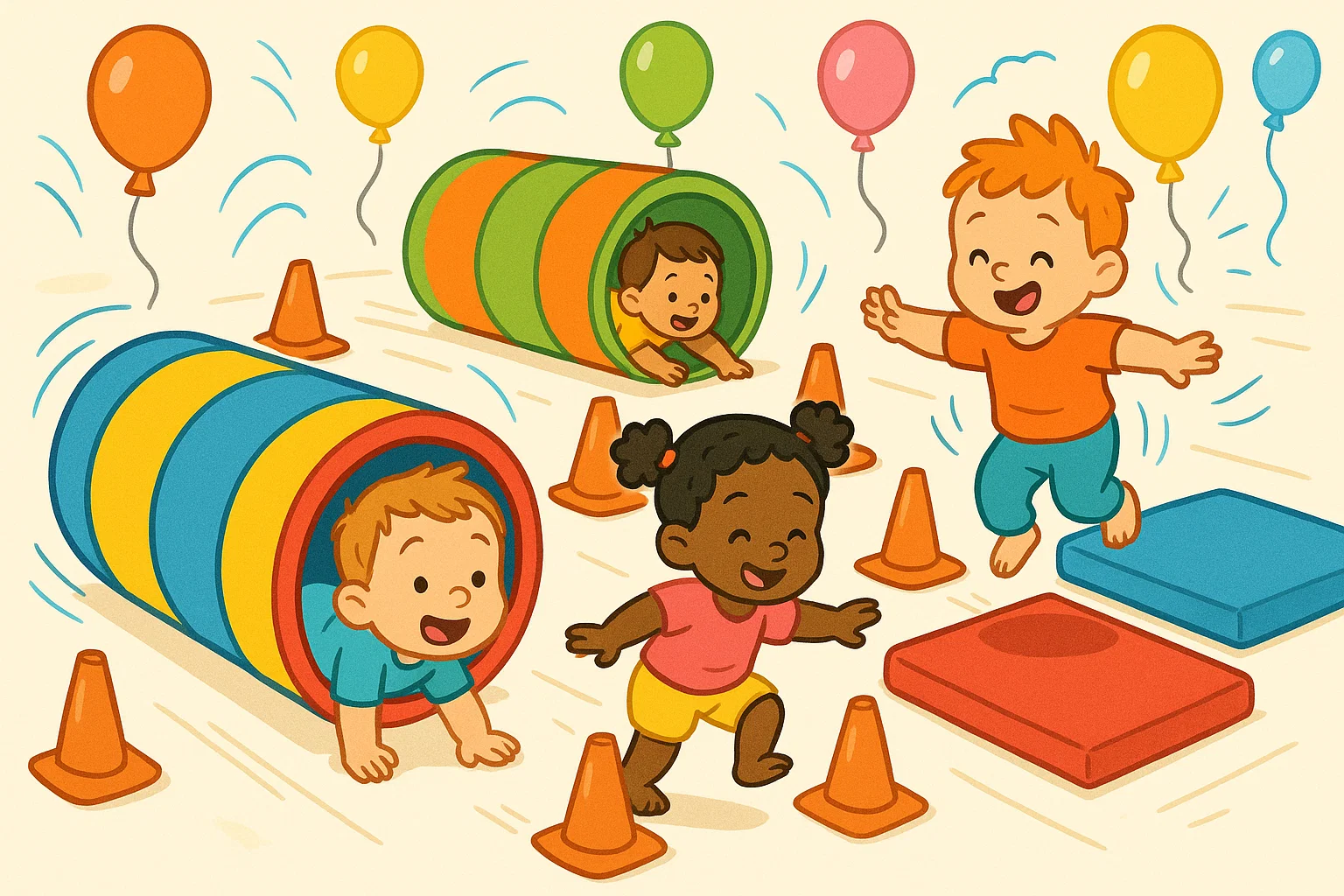
Create simple courses using household items and basic equipment. Set up tunnels to crawl through, cones to walk around, and soft mats for jumping. Keep courses short and straightforward—toddlers prefer multiple trips through simple layouts rather than complex journeys. Include activities like bear crawling, stepping on colorful spots, or throwing bean bags into buckets.
Scavenger Hunt: Simple color/shape hunts suitable for 2–3 year olds
Transform traditional treasure hunt concepts for toddlers by focusing on colors, shapes, or familiar objects. Create simple lists with pictures: find something red, something round, something soft. Hide large, obvious items around the party area and let toddlers search together rather than competing. Consider themed hunts like “Find the Farm Animals” or “Color Hunt” where children collect specific colored items in baskets.
Carnival Yard Games: Bean bag toss, walk the plank, balloon pop
Transform your backyard into a mini carnival with adapted games. Bean bag toss uses large buckets placed close to throwing lines. “Walk the plank” becomes walking along tape lines on the ground. Balloon pop can be done by having children sit on balloons rather than using darts. These ideas include multiple stations where children can rotate between different activities, with small prizes celebrating participation.
Red Light Green Light: Modify pace to match toddlers’ skills
This classic works well when you slow the pace and add visual cues. Use actual colored signs along with verbal commands. “Green Light” means move forward slowly, “Red Light” means freeze. Add variations like “Yellow Light” for tiptoeing or “Blue Light” for hopping to make the game more educational and engaging.
Indoor Party Activities
When weather requires a party without outdoor activities, these indoor options maintain energy while managing space constraints effectively.
Ball Pit Fun: Small inflatable ball pits or DIY versions
Small inflatable ball pits can transform any indoor space into an exciting play area. Create DIY versions using clean kiddie pools filled with plastic balls, or use large cardboard boxes for smaller spaces. This provides sensory play opportunities and gives toddlers a dedicated space for climbing, sitting, and playing safely.
Pass the Parcel: Adapted with easier unwrapping for toddlers
This beloved game works perfectly for toddler celebrations when adapted properly. Wrap a special gift in multiple layers with small treats between each layer. Let the kids take turns unwrapping while music plays, ensuring everyone gets a turn and receives a small prize. This creates anticipation and excitement while teaching patience and turn-taking.
Puppet Show: Parents or kids can participate, boosting creativity
Set up simple puppet theaters using cardboard boxes or sheets hung between chairs. Parents can perform short shows with familiar characters, or better yet, let children be puppeteers. Simple hand or finger puppets work best for toddler hands. Encourage interactive storytelling where children suggest what happens next or make sound effects.
Storytime Corner: Quiet activity with interactive storybooks
Create cozy reading nooks with soft cushions where children can gather for group storytime. Choose interactive books with textures, flaps, or sounds that encourage participation. Books with repetitive phrases work particularly well for group reading and provide calm moments during busy celebrations.
Dance Party: Simple playlist, toddlers love repetition
Indoor dance parties can be just as energetic as outdoor activities. Create playlists featuring toddlers’ favorite songs, including action songs like “Head, Shoulders, Knees and Toes.” Toddlers love repetition, so don’t hesitate to play favorites multiple times. Provide simple props like scarves or ribbons, and clear enough space for safe movement.
Dress Up Station: Costumes, hats, and mirrors for role play
Set up dress-up areas with simple costumes, hats, jewelry, and child-safe mirrors. Include firefighter hats, princess crowns, superhero capes, or doctor stethoscopes. This imaginative play supports social and emotional development while providing entertainment. Organize costumes in bins for easy access and take photos of children in their chosen outfits.
Creative and Educational Activities
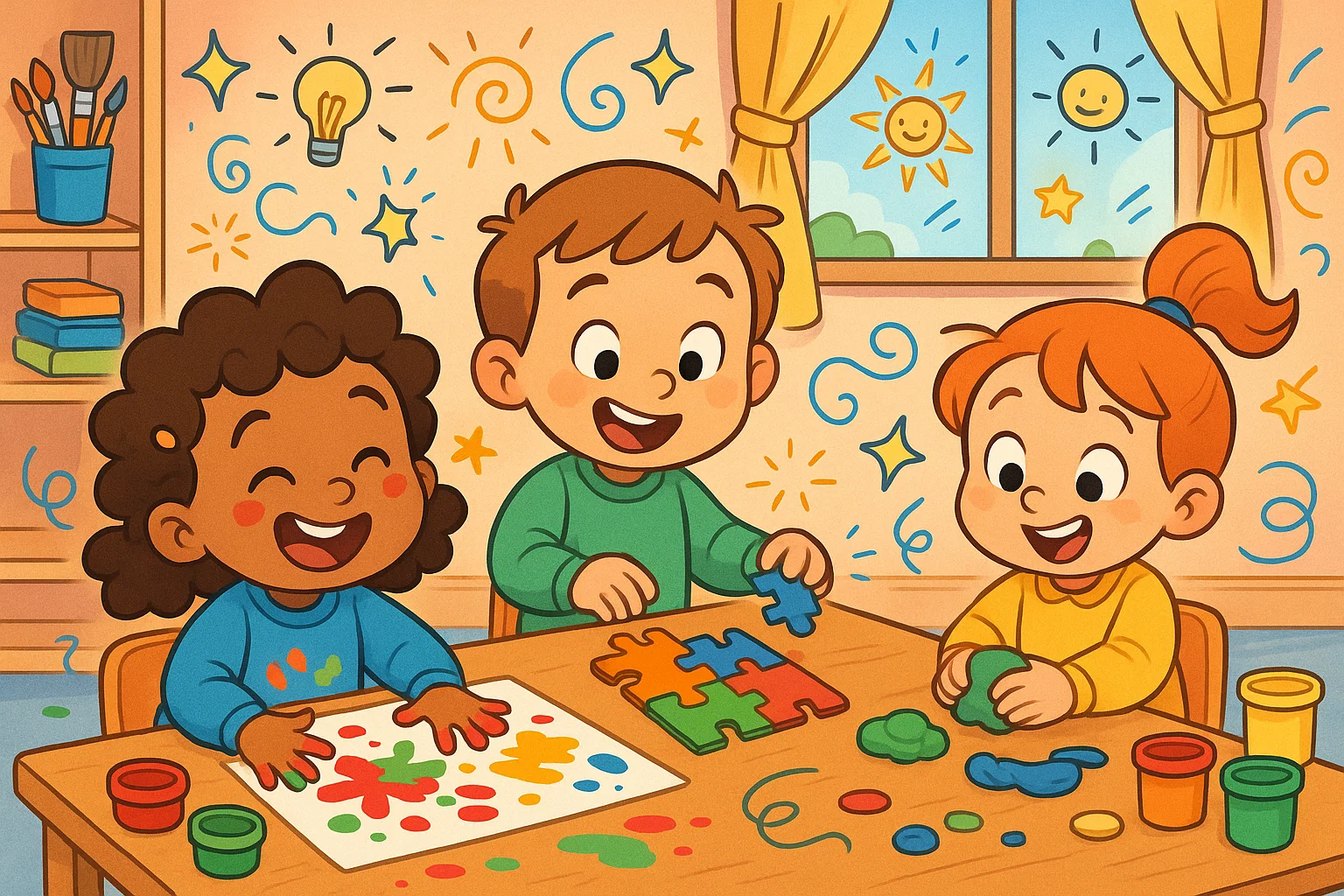
Combining learning with entertainment creates enriching experiences that support development while maintaining engagement. These activities focus on fine motor skills, creativity, and cognitive growth.
Playdough Station: Rolling, shaping, cutting tools
Set up playdough tables with non-toxic, toddler-safe playdough in multiple colors. Provide child-safe tools like plastic knives, rolling pins, cookie cutters, and stamps. Cover tables with plastic for easy cleanup and have damp cloths available for wiping hands. Encourage open-ended exploration rather than directed projects—toddlers benefit more from squishing and experimenting.
Arts and Crafts Table: Stickers, crayons, washable paints
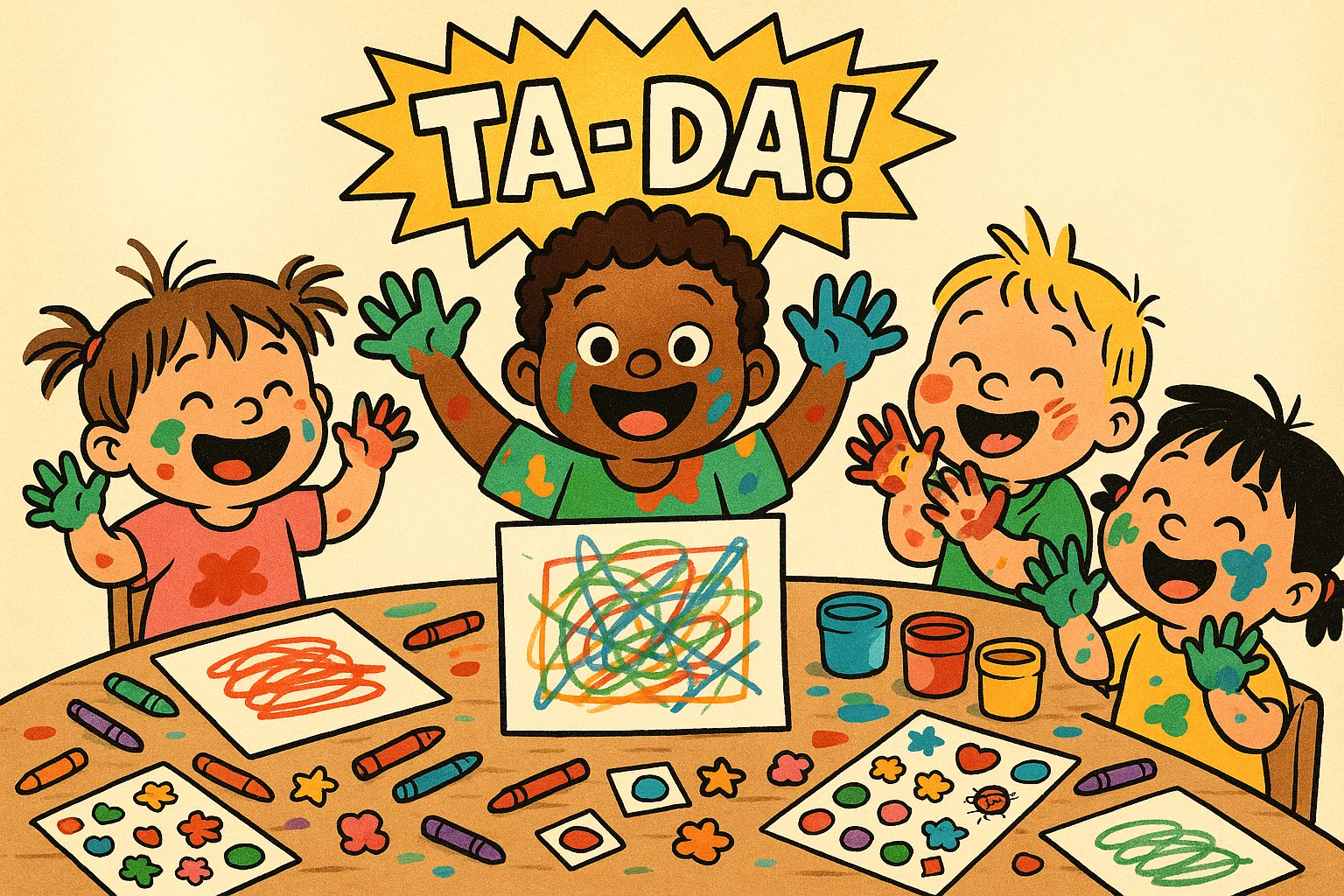
Create arts stations with washable materials appropriate for toddlers. Large crayons, washable markers, stickers, and finger paints work well. Provide large paper and consider taping it directly to tables to prevent sliding. Focus on process over product—the experience of creating matters more than finished artwork. Have wet wipes readily available and consider providing smocks.
Face Painting: Simple designs for toddlers
Offer simple designs like flowers, hearts, butterflies, or animal noses using non-toxic face paints. Professional face painters or parent volunteers can create magical transformations that kids love. Keep designs simple and quick to accommodate short attention spans. Always check for allergies before applying any face paint.
Sensory Bins: Rice, beans, or safe sensory fillers
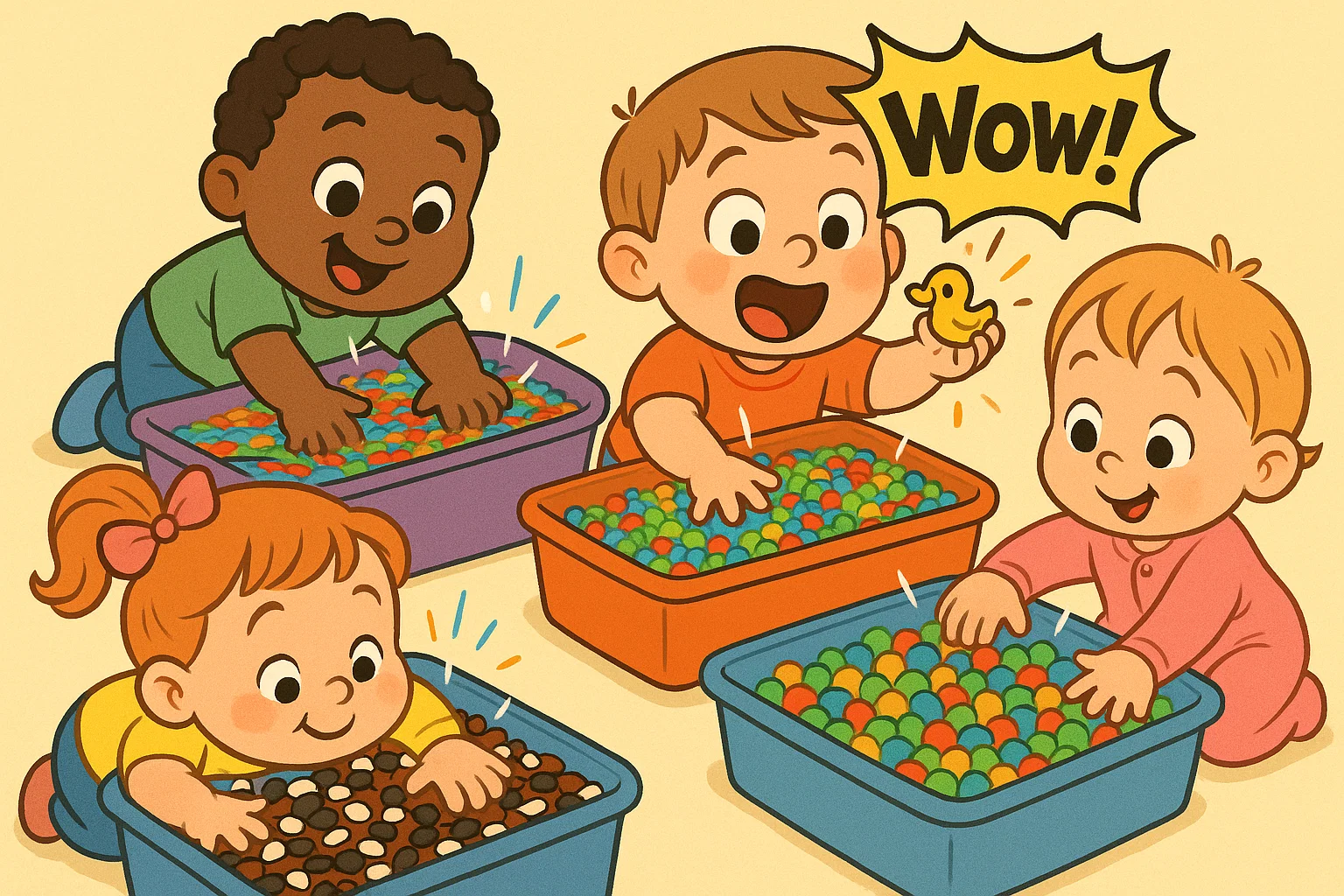
Create exploration bins filled with materials like colored rice, dried beans (large enough to avoid choking hazards), or pasta shapes. Add scoops, small containers, and toys for enhanced play. Always supervise closely, especially with younger toddlers. Consider using edible materials like cereal or crackers for the youngest children.
Bubble Painting: Mix bubbles with paint for fun art
Combine bubble solution with washable paint to create unique artwork. Children blow bubbles onto paper, creating colorful circles when bubbles pop. This activity combines the joy of bubbles with creative expression. Use food coloring mixed with bubble solution for gentler colors, and supervise closely to ensure children don’t drink the solution.
First Birthday Activities (1–2 Year Olds)
Peek-a-Boo Parade: Parents and toddlers play simple peek-a-boo
Organize group peek-a-boo activities where parents and babies participate together. Use colorful scarves or lightweight blankets for hiding faces, or create peek-a-boo boxes with holes cut in them. This classic game supports cognitive development and social bonding.
Soft Play Zone: Foam mats, soft climbing toys
Create safe exploration areas using foam mats, soft blocks, and age-appropriate climbing toys. This allows one-year-olds to practice gross motor skills in secure environments while including different textures and heights for sensory variety.
Cake Smash: How to stage and capture photos safely
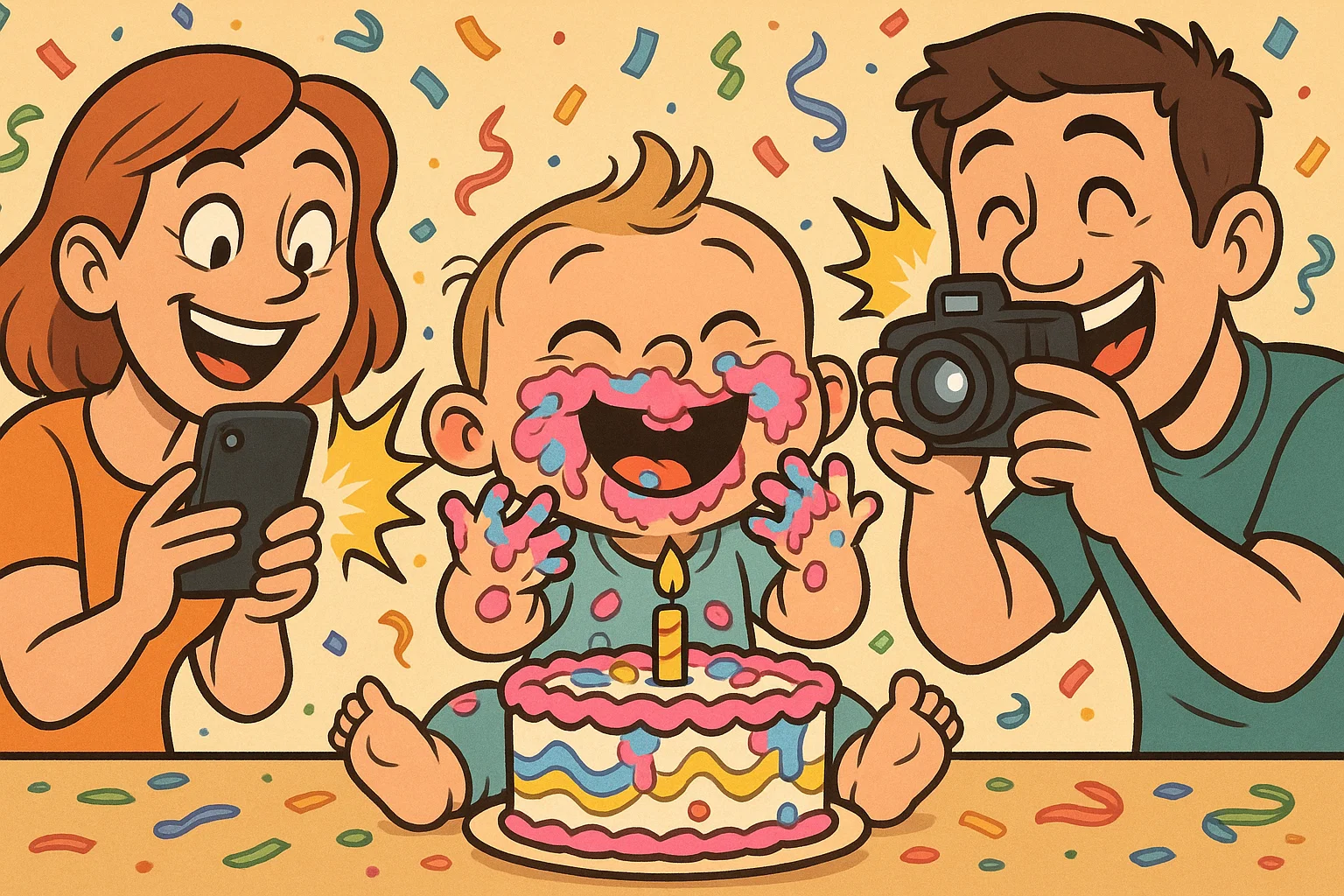
Traditional cake smashes can be fun and memorable when done safely. Use small, simple cakes with minimal decoration. Place children in high chairs or on washable mats under adult supervision and let them explore with their hands. Have wet wipes, towels, and clothing changes ready.
Sensory Play Mats: Textures and colors to explore
Set up mats with different textures for babies to explore through touch. Include materials like fake fur, velvet, or bubble wrap securely attached to prevent hazards. Rotate different texture mats to maintain interest throughout celebrations.
Bubble Bonanza: Always a hit for 1-year-olds
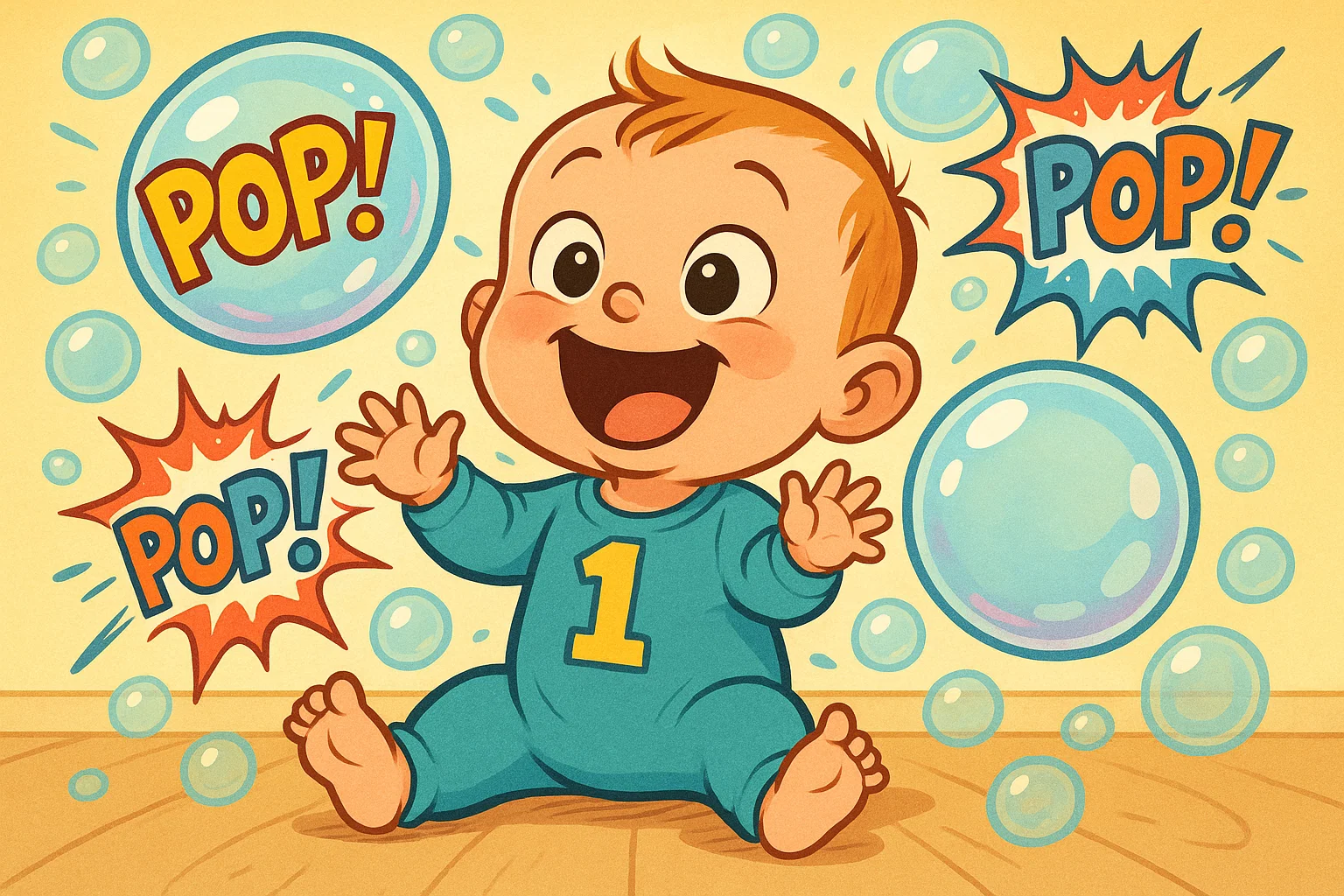
Bubbles create magical moments for one-year-olds. Use bubble machines for continuous entertainment with adult supervision for bubble wands. Visual tracking and reaching movements support development while providing endless entertainment.
Food and Snack Activities
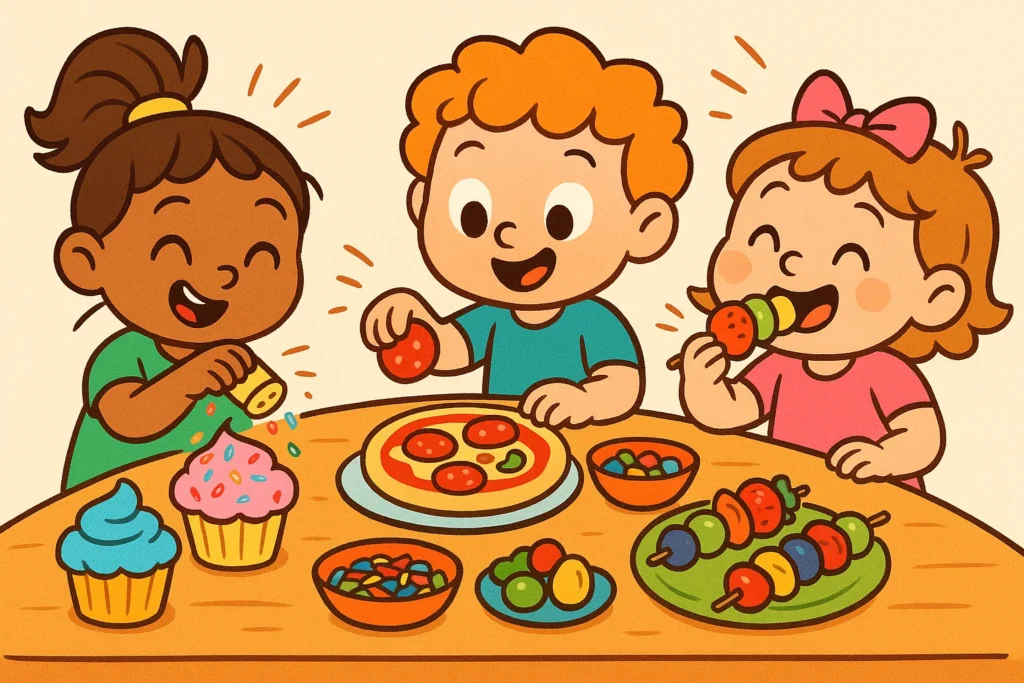
Transform party food into entertainment by involving children in simple preparation activities that combine nutrition with fun.
Make Your Own Mini Pizza: Kids add toppings
Use English muffins or pita bread as bases and provide simple, toddler-friendly toppings like shredded cheese, diced tomatoes, and small pepperoni pieces. Let the kids create their own mini pizzas with supervision. This promotes fine motor skills while giving children ownership over their food.
Cupcake Decorating: Sprinkles, icing, safe decorations
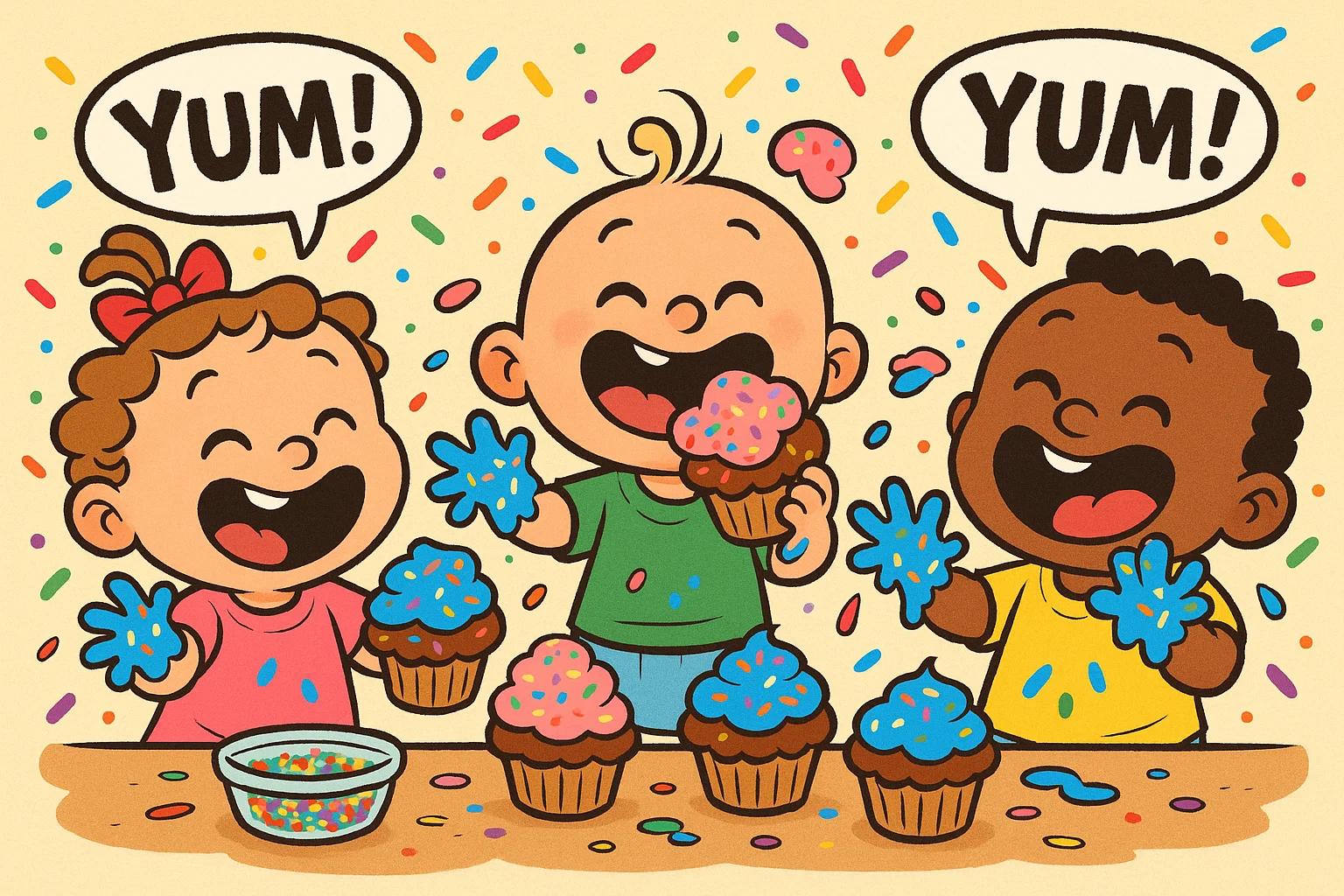
Set up decorating stations with pre-baked cupcakes and child-safe supplies. Use squeeze bottles or plastic knives for frosting application and provide colorful sprinkles in small bowls. Focus on the decorating process rather than creating perfect results—children can eat and enjoy their creations.
Classic Egg and Spoon Race: Modified for toddlers
Use plastic spoons with hard-boiled eggs or ping pong balls for safe competition. This traditional game adds active fun to any celebration while being perfectly adapted for toddler capabilities and safety requirements.
Fruit Kabob Station: Pre-cut toddler-safe fruits
Create healthy snacking activities by providing pre-cut fruit pieces and child-safe skewers, or skip skewers entirely for fruit cups. Include favorites like halved grapes, strawberries, melon pieces, and banana slices. This encourages healthy eating while giving children choices.
Seasonal and Themed Party Activities
Summer Water Play: Sprinklers, splash pads
Summer parties naturally incorporate water activities. Set up sprinklers, small splash pads, or provide containers for pouring and splashing. Water play provides cooling relief and excellent sensory stimulation while always requiring close supervision.
Winter Indoor Carnival: Toss games, balloon relay
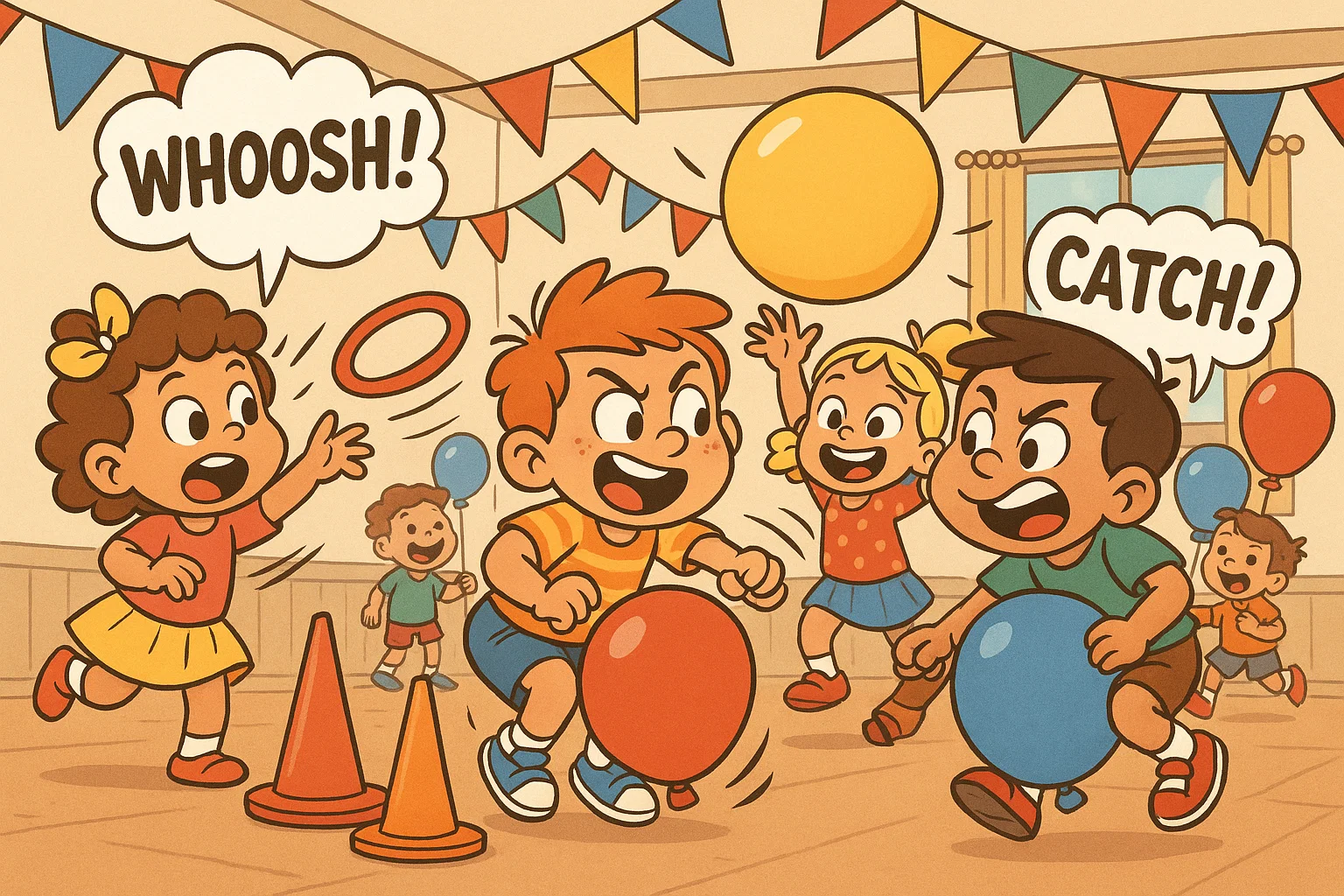
When cold weather keeps parties inside, create carnival atmospheres with indoor games. Set up bean bag tosses, balloon relay races, and carnival-style activities using winter themes like “snowball” toss or “ice fishing” with magnetic games.
Character-Themed Games: Adapt classics to themes (e.g., “Frozen” freeze dance)
Customize familiar games to match favorite characters or themes. “Frozen” freeze dance, superhero obstacle courses, or princess tea parties add excitement while maintaining familiar game structures that children already understand and enjoy.
Party Planning Essentials
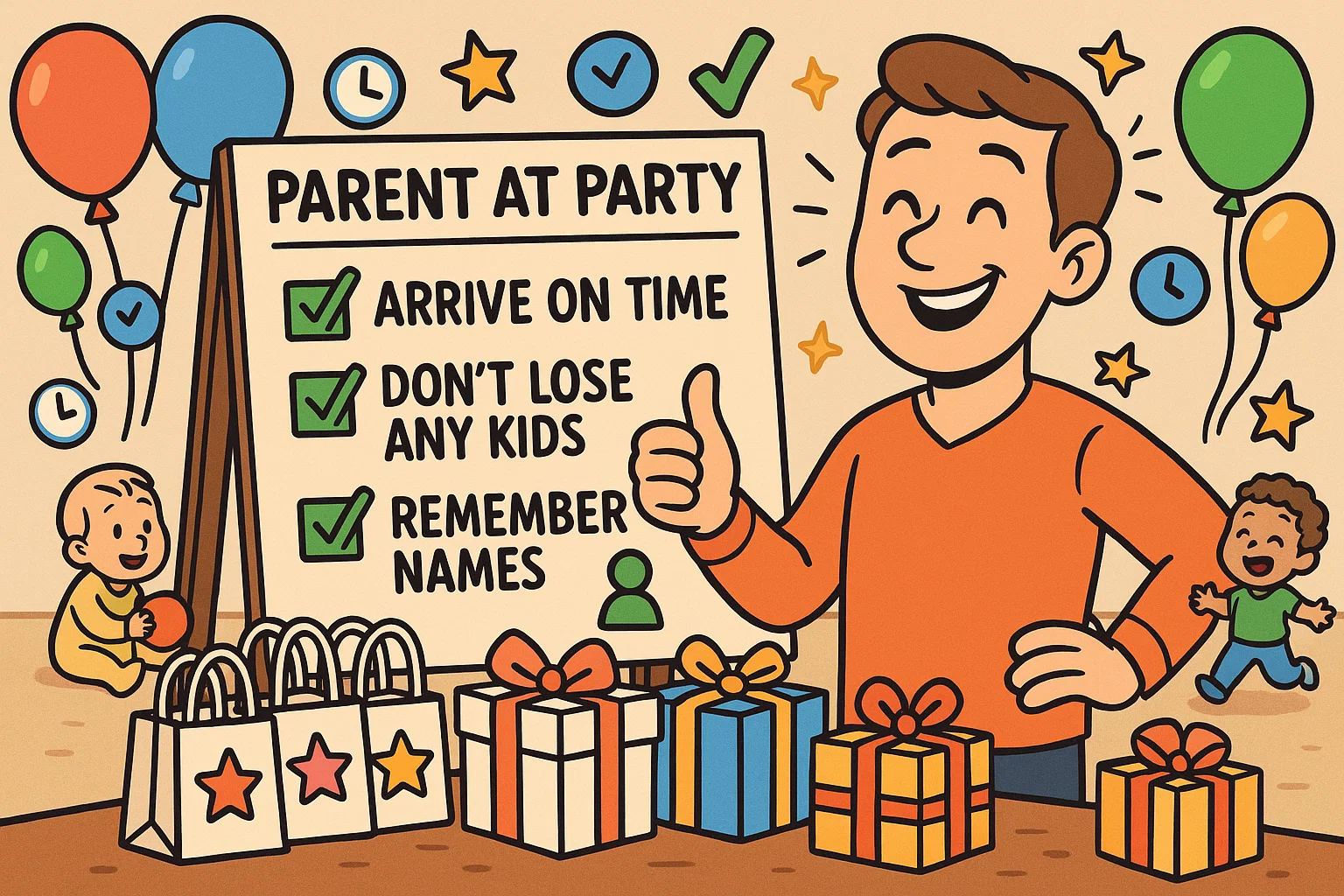
Party Bags and Thank You Notes
Fill party bags with simple, age-appropriate items like bubbles, crayons, stickers, or small books. Avoid small items that could pose choking hazards. Prepare thank you notes featuring photos from the party—many parents appreciate these keepsakes that capture special moments from their child’s celebration.
Managing Guest Lists and Timing
When planning a birthday party, keep guest lists small (4-6 children) and parties short (1.5-2 hours). This prevents overstimulation while ensuring everyone has fun. Plan arrival time, 2-3 main activities, party food and cake time, and gentle wind-down periods before parents collect tired but happy children.
Creating Special Moments
Plan time to blow out the candles with group singing. These traditional moments create lasting memories and photo opportunities for families. Focus on capturing genuine joy rather than perfect performances.
Toddler Party FAQ ❓
How many activities should I plan? Keep it simple, 3–4 main games
For toddler celebrations, less is definitely more. Plan 3-4 main activities with 2-3 backup options in case something doesn’t work as expected. Consider party duration and allow 15-20 minutes per main activity, with flexibility for toddlers who want to continue enjoying favorites.
How do I keep toddlers busy during downtime? Quiet stations like coloring
Set up quiet activity stations that children can access independently during transitions or when needing breaks from group activities. Coloring stations, book corners, or simple puzzles work well for these moments and help manage different energy levels.
How long should a toddler party last? Typically 1.5–2 hours
Toddler parties work best when kept short and sweet. A 1.5 to 2-hour timeframe allows enough time for activities, snacks, and socializing without overwhelming young children or testing their attention spans beyond reasonable limits.
What are safe indoor options? Ball pits, storytime, puppet shows
Safe indoor activities focus on age-appropriate materials and adequate supervision. Ball pits with soft balls, interactive storytime sessions, and simple puppet shows provide entertainment while maintaining safety standards and managing space effectively.
Do I need party favors? Easy, simple ideas like bubbles or crayons
Party favors should be simple, safe, and age-appropriate. Bubbles, crayons, stickers, or small books make excellent take-home gifts that parents appreciate and children enjoy long after celebrations end.
Planning successful toddler birthday parties means understanding that the best celebrations focus on simple pleasures rather than elaborate productions. Whether you’re hosting many parties or planning your first celebration, remember that kids love familiar activities, gentle competition, and opportunities to move and explore safely.
The most important element is creating warm, welcoming environments where children feel free to play, laugh, and celebrate together. When you choose a theme, plan your invite list, and select activities, focus on age-appropriate fun that matches toddlers’ developmental needs while creating those magical moments that make childhood celebrations truly special.
With these party ideas and practical tips, you’re well-equipped to create a great birthday party that will delight toddlers, satisfy parents, and create lasting memories for everyone involved. Remember that flexibility and preparation are key—toddlers may surprise you with their preferences, and the best parties adapt to children’s natural rhythms and interests.
